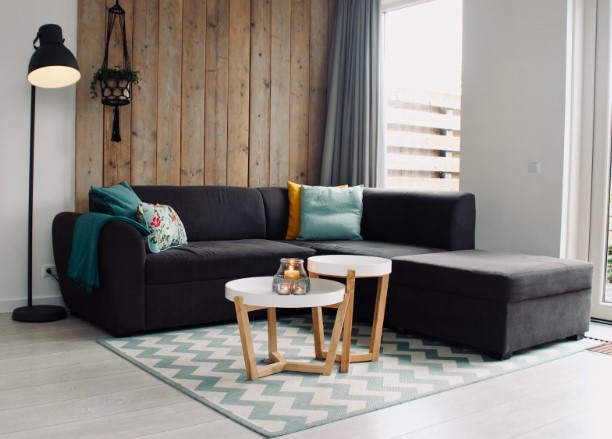Wood has been a staple material in architecture and interior design for centuries, valued for its warmth, versatility, and timeless appeal. From rustic cabins to modern skyscrapers, wood elements can transform any space into a cozy retreat or a sophisticated sanctuary. Whether you’re renovating your home, designing a new office space, or embarking on a commercial project, incorporating wood elements can enhance the aesthetic and atmosphere of the environment.

Understanding Wood Types and Characteristics
Before diving into the design process, it’s essential to understand the different types of wood available and their characteristics. Hardwoods such as oak, maple, and walnut are prized for their durability and rich grain patterns, making them ideal for furniture, flooring, and architectural details. Softwoods like pine and cedar are more affordable and easier to work with, suitable for structural elements and decorative accents.
Each type of wood has its unique color, texture, and density, allowing for endless design possibilities. Additionally, factors such as sustainability, maintenance requirements, and cost should also be considered when selecting wood for your project. By choosing the right wood species, you can achieve the desired aesthetic while ensuring longevity and environmental responsibility.
Incorporating Wood in Architectural Elements
One of the most effective ways to enhance a space with wood is by incorporating it into architectural elements. From exposed beams and trusses to timber-framed ceilings and wooden columns, these features add character and warmth to any room. In a residential setting, wooden beams can create a rustic charm in a living room or kitchen, while in commercial spaces, they can evoke a sense of sophistication and elegance.
Wood can also be used to clad walls and ceilings, providing a natural and organic backdrop for the rest of the design elements. Whether it’s reclaimed barn wood for a farmhouse aesthetic or sleek hardwood panels for a contemporary look, the versatility of wood allows for endless design possibilities. Additionally, integrating wood into architectural elements can help improve acoustics, insulation, and overall comfort in the space.
Enhancing Interior Spaces with Wood Furniture
Furniture plays a significant role in defining the style and functionality of a space, and incorporating wood furniture can add warmth, texture, and visual interest. Whether it’s a handcrafted dining table, a reclaimed wood coffee table, or a custom-built bookshelf, wooden furniture pieces can become focal points that tie the design together.
When selecting wood furniture, consider the overall aesthetic of the space and choose pieces that complement the existing decor. Mixing different wood finishes and textures can add depth and dimension to the design while creating a cohesive look. Additionally, investing in high-quality, durable furniture pieces ensures longevity and sustainability, reducing the need for frequent replacements. Furthermore, integrating a wooden extendable table and bench can offer versatility and functionality to the space. These pieces not only provide ample seating and dining options but also add a touch of rustic charm or modern elegance, depending on the design. Whether it’s for hosting gatherings or enjoying everyday meals, a wooden extendable table and bench can elevate the dining experience while enhancing the overall ambiance of the room.
Creating Stunning Flooring Designs with Wood
Flooring is a foundational element of interior design, and choosing the right material can significantly impact the overall look and feel of a space. Wood flooring is a popular choice for its natural beauty, durability, and timeless appeal. Whether it’s hardwood planks, engineered wood, or reclaimed timber, wooden floors can add warmth and character to any room.
When selecting wood flooring, consider factors such as the type of wood, finish, and installation method. Hardwoods like oak and maple are ideal for high-traffic areas due to their durability, while softer woods like pine may be better suited for low-traffic areas. Additionally, choosing a matte or satin finish can enhance the natural beauty of the wood while protecting against scratches and stains.
Accentuating Spaces with Wood Details
Incorporating wood details such as moldings, trim, and paneling can add a touch of elegance and sophistication to any space. Whether it’s crown molding in a living room, wainscoting in a dining room, or chair rails in a hallway, these architectural details can elevate the design and create visual interest.
Wood details can also be used to highlight architectural features or define different areas within a space. For example, a wooden archway can frame a doorway or transition between rooms, while a wood-paneled accent wall can serve as a focal point in a living room or bedroom. Additionally, incorporating wood details in unexpected places, such as staircases or ceilings, can add a sense of drama and luxury to the design.
Balancing Wood with Other Materials
While wood is a versatile and timeless material, it’s essential to strike a balance when incorporating it into interior design. Mixing wood with other materials such as metal, glass, and stone can add contrast and visual interest while creating a harmonious and balanced aesthetic.
For example, pairing a wooden dining table with metal chairs can create a modern industrial look, while combining wood flooring with stone countertops can add a touch of rustic elegance to a kitchen. Additionally, incorporating glass elements such as windows, doors, or partitions can enhance natural light and create a sense of openness in the space.
Embracing Sustainable Wood Design Practices
In today’s environmentally conscious world, sustainability is a key consideration in design and construction projects. Choosing sustainably sourced wood materials and implementing eco-friendly design practices can help reduce the environmental impact of your project while promoting responsible stewardship of natural resources.
Opting for reclaimed or salvaged wood materials not only adds character and charm to the design but also helps reduce deforestation and minimize waste. Additionally, selecting wood products certified by organizations such as the Forest Stewardship Council (FSC) ensures that the wood comes from responsibly managed forests.

Incorporating wood elements into interior design can transform any space into a beautiful and inviting environment. Whether it’s architectural features, furniture, flooring, or decorative accents, wood adds warmth, texture, and character to the design while creating a sense of connection to nature. By understanding the different types of wood, embracing sustainable practices, and implementing proper maintenance, you can create stunning spaces that stand the test of time.






